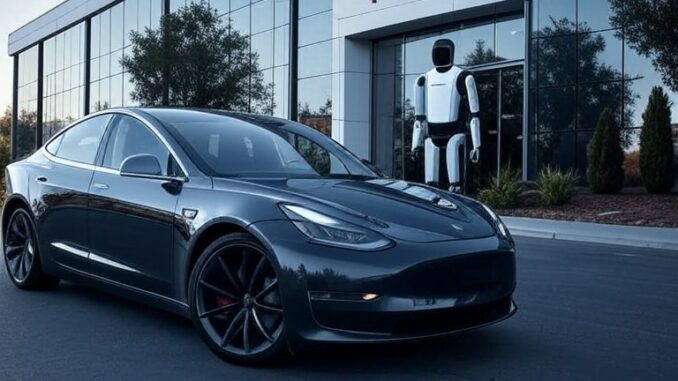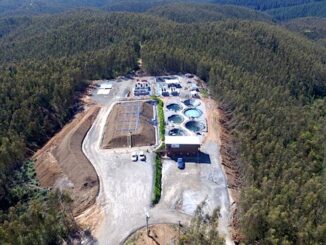
In the rapidly evolving landscape of technology and energy, Tesla Inc. (TSLA) stands out as a company that’s transcending its roots as an electric vehicle (EV) pioneer. Under the visionary leadership of CEO Elon Musk, Tesla is morphing into a multifaceted powerhouse, leveraging advancements in artificial intelligence (AI), robotics, manufacturing, and innovative materials to redefine industries. Recent announcements highlight Tesla’s strategic pivots toward AI chips, a booming manufacturing presence in Nevada, humanoid robots like Optimus, partnerships with tech giants such as Samsung, and explorations into cutting-edge materials like graphene. Coupled with insights from the Q2 2025 earnings report, these developments paint a picture of a company poised for long-term dominance. For investors eyeing sustainable growth in the energy and tech sectors, Tesla’s diversification offers compelling reasons to hold steady through short-term volatility.
Revolutionizing AI with Next-Generation Chips
Tesla’s ambitions in AI extend far beyond autonomous driving software. The company has been investing heavily in custom hardware to power its AI initiatives, including the Full Self-Driving (FSD) system and data centers. In a significant shift announced in August 2025, Tesla decided to streamline its AI chip design efforts by disbanding the Dojo supercomputer team, redirecting resources toward next-generation inference chips for running AI models.
This move, confirmed by Musk, marks the end of the in-house Dojo project, which he described as an “evolutionary dead end,” and pivots focus to AI5 and AI6 chips.
The AI5 chips are slated for production by the end of 2026, while AI6 represents Dojo’s successor, integrating into Tesla’s consumer products like vehicles and robots.
This hardware push is crucial for Tesla’s AI ecosystem, enabling faster training and deployment of models for autonomy and robotics. By prioritizing these chips, Tesla aims to reduce reliance on external suppliers like Nvidia in the long run, though recent partnerships suggest a hybrid approach. These advancements position Tesla not just as an EV maker but as a key player in the AI infrastructure boom, where demand for efficient computing is skyrocketing amid the global energy transition.The Nevada Manufacturing Boom: Scaling for the FutureTesla’s Gigafactory Nevada is at the heart of a manufacturing renaissance, transforming the state into a hub for advanced energy and vehicle production. With a $3.6 billion expansion underway, the facility is set to produce 100 GWh of 4680 battery cells annually—enough to power 1.5 million EVs—and host the first high-volume Semi truck factory.
Production of the electric Semi trucks is expected to begin by the end of 2025, with full-scale output ramping up in 2026, addressing long-awaited orders and boosting Tesla’s presence in commercial trucking.
Additionally, Tesla is nearing completion of a new lithium iron phosphate (LFP) battery plant in Nevada, adopting a wet coating process potentially influenced by Chinese tech like CATL’s.
This 10 GWh facility will complement existing LFP production in California, enhancing energy storage capabilities for grid-scale applications and EVs. The boom has spurred hiring sprees, with thousands of new jobs projected, underscoring Nevada’s role in U.S. manufacturing resurgence.
For the energy sector, this expansion means greater domestic supply of batteries, reducing reliance on imports and supporting the shift to renewables.Optimus: Humanoid Robots Entering the SpotlightTesla’s foray into robotics with the Optimus humanoid bot exemplifies its game-changing potential beyond EVs. Designed for unsafe, repetitive, or boring tasks, Optimus is evolving rapidly. In Q2 2025 updates, Musk highlighted Generation 3 advancements, predicting that the robots could perform factory tasks by year’s end and be available for sale as early as late 2025.
Despite reports of production delays—Tesla is reportedly behind on its pledge to build 5,000 units this year—the company targets mass production in 2025, with projections for up to 10,000 bots.
Musk has boldly claimed Optimus could become Tesla’s “biggest product ever,” surpassing even EVs in impact.
Integrated with Tesla’s AI, these bi-pedal robots could revolutionize manufacturing, logistics, and home assistance, creating new revenue streams in a market projected to explode. This positions Tesla at the forefront of the robotics revolution, blending energy-efficient design with AI to address labor shortages in energy-intensive industries.Strategic Alliances: The Samsung Partnership and MoreCollaborations are key to Tesla’s expansion, with the recent $16.5 billion deal with Samsung Electronics standing out. Announced in July 2025, this pact tasks Samsung with producing Tesla’s AI6 chips at its new Texas fab, dedicating significant capacity to Tesla’s needs.
Musk confirmed the agreement, which builds on prior ties in chips and batteries, and could spur U.S. contract manufacturing growth.
This partnership not only accelerates AI chip production but also aligns with Tesla’s goal of vertical integration while leveraging Samsung’s expertise in high-bandwidth memory and advanced semiconductors.Beyond Samsung, Tesla’s ecosystem includes potential ties to material suppliers, hinting at broader innovations. These alliances amplify Tesla’s reach, combining energy tech with global supply chains to scale operations efficiently.Exploring Graphene: A Material for Tomorrow’s Energy SolutionsWhile not as prominently announced, Tesla’s interest in graphene—a super-conductive material—has sparked speculation about battery breakthroughs. Rumors of graphene-aluminum-ion batteries for the 2025 Model Y promise faster charging (15 minutes) and enhanced safety, but fact-checks reveal no official confirmation from Tesla or Musk.
However, suppliers like Graphjet Technology anticipate benefits from the Tesla-Samsung deal, potentially supplying graphite-derived graphene for chips and batteries.
Graphene’s potential in energy storage—offering higher density and longevity—could complement Tesla’s LFP and 4680 cells, reducing lithium dependency and boosting EV range. Though still emerging, these explorations signal Tesla’s commitment to material science, positioning it to lead in sustainable energy tech.Analyzing Tesla’s Q2 2025 Earnings: Challenges and Bright SpotsTesla’s Q2 2025 earnings, released on July 23, showed mixed results amid a transitional period. Adjusted earnings per share (EPS) came in at $0.40, missing the consensus estimate of $0.43, while revenue slightly underperformed at a 0.45% beat but declined year-over-year for the second straight quarter.
Auto revenue dropped, reflecting slower EV sales, and free cash flow plummeted, prompting Musk to warn of “rough” quarters ahead.
However, positives emerged in diversification: The energy segment delivered $846 million in gross profit, driven by renewables, energy storage deployments, and AI data center demand.
Tesla highlighted the commercial rollout of robotaxi services and plans for an affordable EV model in 2025.
Overall, the report underscores short-term headwinds from market saturation and competition but reinforces long-term bets on AI, robotics, and energy.
|
Key Metric
|
Q2 2025 Actual
|
Consensus Estimate
|
Year-Over-Year Change
|
|---|---|---|---|
|
Adjusted EPS
|
$0.40
|
$0.43
|
Decrease
|
|
Revenue
|
Slight beat (0.45%)
|
Expected
|
Decline
|
|
Auto Revenue
|
Drop
|
N/A
|
Second straight quarter decline
|
|
Energy Gross Profit
|
$846M
|
N/A
|
Growth from renewables/AI
|
|
Free Cash Flow
|
Plummeted
|
N/A
|
Significant decline
|
Why Investors Should Eye Tesla Stock for the Long Haul
Despite Q2 misses and stock volatility, Tesla’s trajectory makes it a strong long-term hold. The company’s pivot to AI chips, robotics, and energy storage taps into trillion-dollar markets, with Optimus alone potentially dwarfing EV revenues. Nevada’s boom ensures scaled production, while partnerships like Samsung mitigate risks and accelerate innovation. Even graphene rumors hint at battery revolutions that could extend EV leadership.
Analysts note Tesla’s valuation increasingly reflects its “tech company” status, with autonomy and energy growth offsetting EV slowdowns.
For energy-focused investors, Tesla’s role in grid stabilization and renewables is undervalued. With a forward-looking P/E ratio justified by these catalysts, holding TSLA through 2030 could yield substantial returns as AI and robotics mature.
In conclusion, Tesla is redefining itself as an AI-energy-robotics juggernaut, changing the game for transportation, computing, and beyond. As the world shifts toward sustainable tech, Tesla’s innovations offer a roadmap—and for investors, a promising path forward.
Is Oil & Gas Right for Your Portfolio?
Crude Oil, LNG, Jet Fuel price quote
ENB Top News
ENB
Energy Dashboard
ENB Podcast
ENB Substack






